Guglielmo Marconi - IK1TGV
Menu principale:
- Home Page
- BIOGRAPHY
- THE TGV
- RADIO HISTORY
- RADIO STATION
- OUTDOOR ACTIVITY
- FRIENDS AND RELATIVES
- PHOTOGRAPHY
- PAINTING
- MOUNTAINEERING
- MORE HOBBY
- WINES
- ENGINEERING PROFESSION
- To Contact me:
- Link :
Guglielmo Marconi
Guglielmo Marconi spent his childhood between Grifone (Pontecchio) Florence and Livorno. At the age of three years he went to England with his mother, Annie Jameson, and stayed there for about three years. His school School was discontinuous and characterized by setbacks and failures. After attending the Technical Institute in Livorno he didnt pass the entrance examinations for the Naval Academy, or the University of Bologna. In the summer of 1894, after reading on a journal about the experiences of Heinrich Hertz on electromagnetic waves, he started thinking about doing wireless telegraphy; He talked about this idea to Augustus Righi who was a physics professor and his neighbor. Despites the Professor perplexity,Marconi spent all the autumn and winter studing intensively and performing experiments in a laboratory in a room in VillaGrifone. He repeated Hertz’s experiments and , passed to use the coherer, which he improved it changing it a bit, and finally mounted an external antenna transmitting signals, first inside the laboratory and then between the laboratory and the nearby meadow, arriving in August 1895 to cover the distance of 2400 meters.
A short time later, he finally made the first transmission beyond an obstacle, transmitting the letter "S" from the laboratory Grifone Celestine over the hill, where there was brother Alfonso and helper Antonio Marchi. This is the episode of the famous "rifle shot", which comfirmed the reception of the signal sent. Following his mother advice, Marconi set off for London on the 12 of February 1896. There he filed a patent protection of his invention and was able to raise the capital for his development. On June 2, 1896 Marconi deposited Patent Office in London a final demand for a system of wireless telegraphy, with the title of "Improvements in the transmission of signals and in electrical and related equipment. "In July 27, 1896 he made his first official experiment in front of the engineer head officer of the Ministry of Posts, William H. Preece, transmitting signals between the Ministry of Post and Savings Bank in Queen Victoria Street, a distance of about a kilometer. this was a Morse printer device.
In July 20, 1897 The Wireless Telegraph and Signal Co. Ltd was set up in London, with registered capital of £ 100,000 in shares of a pound, under the direction of Guglielmo Marconi and his cousin Henry Jameson-
On December 9, 1901 Marconi arrived in the island Newfoundland, where he ordered Poldhu to transmit for 3 hours a day signal "S" of Morse code. On 12 December 1901 station St. John's finally received three points of the letter "S" transmitted by the station Poldhu.Therefore is confirmed that the electromagnetic waves were not arrested by the earth curvature : it was the first transatlantic transmission.
The return trip to England with the steamer Philadelphia at the beginning of the next year cleared up doubts about the reliability of the transmission of 12 December, in fact during the trip, a Morse receiver registered the received signals on a tape from Poldhu at the presence of the master or first officer, who signed the band and takes note of the position of the ship, all posts are completed and legible. On January 18, 1903 was inaugurated in Cape Cod the first great power station of the United States, with the first radio message between the United States and Great Britain, headed by President Theodore Roosevelt to King Edward VII. On January 25, 1909 due to the fog the steamer was invested and sank in a few hours.
Thanks to Marconi telegraph about 1700 people were saved.This event triggered a strong emotion. On December 1, 1909 Marconi was the first Italian who won the Nobel Prize in Physics with Professor Braun Telefunken. April 15, 1912 The Titanic sank, the signal emergency SOS was used for the first time; Marconi, who was located in New York, went on board the ship that collected the survivors to meet the radio operator.
On December 30 1914 Marconi was named Senator of the United Italy. When the war broke out in 1915, Marconi joined the Italian Army as an officer in 1916 and became an official vessel. In September the same year the first Marconi equipment was installed on a two-
In March 1916, Solari and Marconi make the first experiment on the very short waves in the corridor of the military hospital of Genoa where they were hospitalized.
From the spring of 1917 Marconi receives from the government offices as type technical but also political and financial delicate tasks. In the month of February 1919 he was put on sale the large yacht Archduchess Maria Theresa of Austria, Elettra Marconi renaming will buy it. On June 15, 1920 is transmitted for the first time a concert from Chelmsford (UK), among 1922 and 1923 assisted by Charles Samuel Franklin (inventor directional antenna) and Luigi Solari, Marconi intensified in England's experiments with waves of 15 meters, reaching 160 km transmission distance. Shortwave, and even more so with the waves very short, developed as needed antenna size reduced power and considerably lower for the transmission, then cost-
Also in 1924 aboard the Electra in the port of Beirut, noted that the radio signals transmitted from Poldhu could cover the distance of 2,400 km over the whole day; Marconi understood that the wavelength 32 meters was able to get good results, failing to give a scientific explanation.
After the important achievements of the directional short-
the United Kingdom and Australia, Canada, South Africa and India, with a regular service, with a transmission rate of at least 100 words per minutes, day and night.
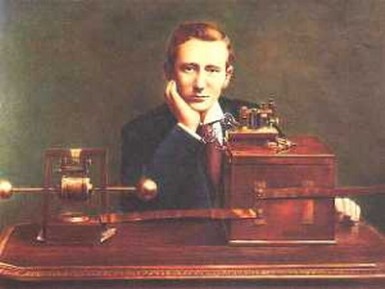
The young Guglielmo Marconi
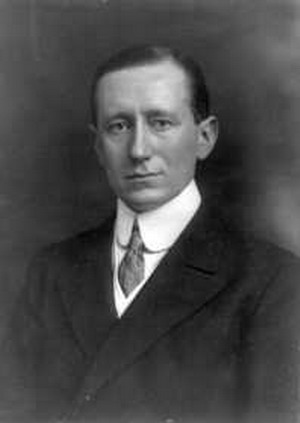
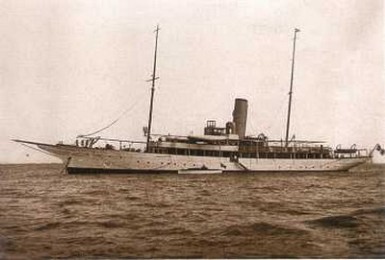
The Elettra ship
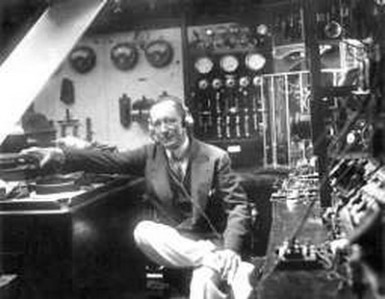
Marconi in the cabin with radio equipment on board of Elettra ship.
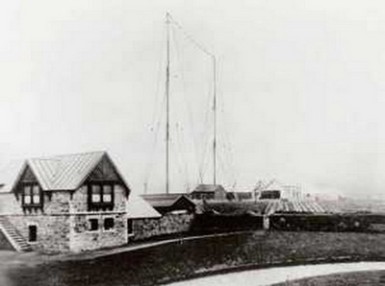
The transmitting station of Poldou in Cornwall: 1 transoceanic transmission December 12, 1901
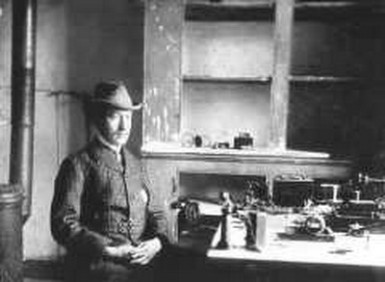
Marconi inside the cabin where the receivers were on Signal Hill
during test in 1901.
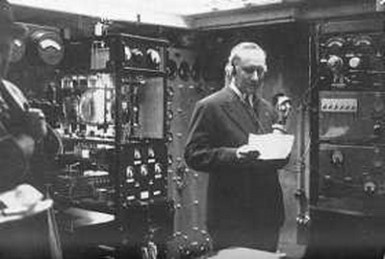
The day of switching on the lights of Sydney Town Hall,
carried out by Guglielmo Marconi in his cabin on board the Electra radio, March 26, 1930.
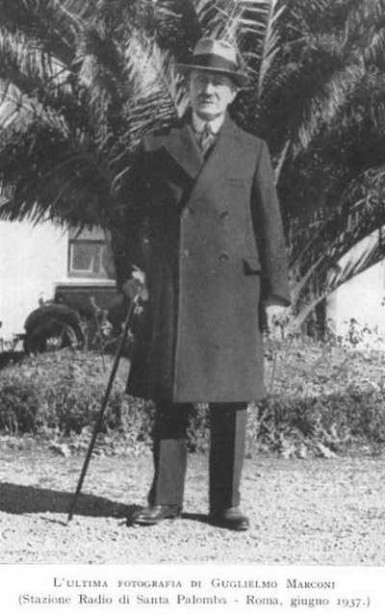
The voice of Guglielmo Marconi